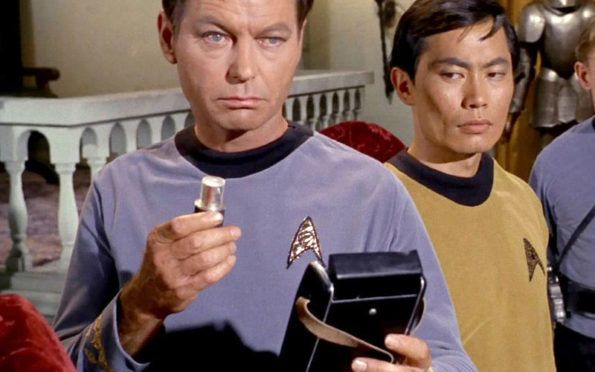Researchers at a Scottish university have taken inspiration from a sci-fi classic in an effort to help people live longer and prosper from good health.
Academics at the University of Glasgow have boldly gone where no man has gone before in their quest to make sophisticated diagnoses in a quicker time.
They have created a handheld device inspired by the famous tricorder gadget shown on Star Trek, which medics on the programme have been using since the original series starring William Shatner.
In a new paper published in the journal Biosensors and Bioelectronics, the researchers explained how their device pairs a handheld sensor with a smartphone app to measure the levels of various metabolites in fluid samples from patients.
Metabolites are small molecules found in fluids from the human body and by measuring and monitoring their relative abundance, scientists can keep track of general heath or the progression of specific diseases.
The new device is particularly useful in cases of heart attack, cancer and stroke, where rapid diagnosis is vital for effective treatment.
Samadhan Patil, of the university’s school of engineering, explained the astounding effects of the technology.
He said: “We have been able to detect and measure multiple metabolites associated with heart attack and prostate cancer simultaneously using this device.
“It has potential to track progression of the disease in its early phase and is ideally suited for the subsequent prognosis.”
Professor David Cumming added: “Handheld, inexpensive diagnostic devices capable of accurately measuring metabolites open up a wide range of applications for medicine, and with this latest development we’ve taken an important step closer to bringing such a device to market.
“It’s an exciting breakthrough and we’re keen to continue building on the technology we’ve developed so far.”
Metabolites can presently be measured by existing processes but they are expensive and require bulky equipment which can be slow to offer diagnostic results.
The new device is built around new and inexpensive material, and features a chip smaller than a fingertip.
It can be operated via any Android-based tablet or smartphone which provides data acquisition, computation, visualisation and power.
The tricorder which became a famous part of the Star Trek universe was originally a black, rectangular device but its appearance changed in subsequent versions of the show.










